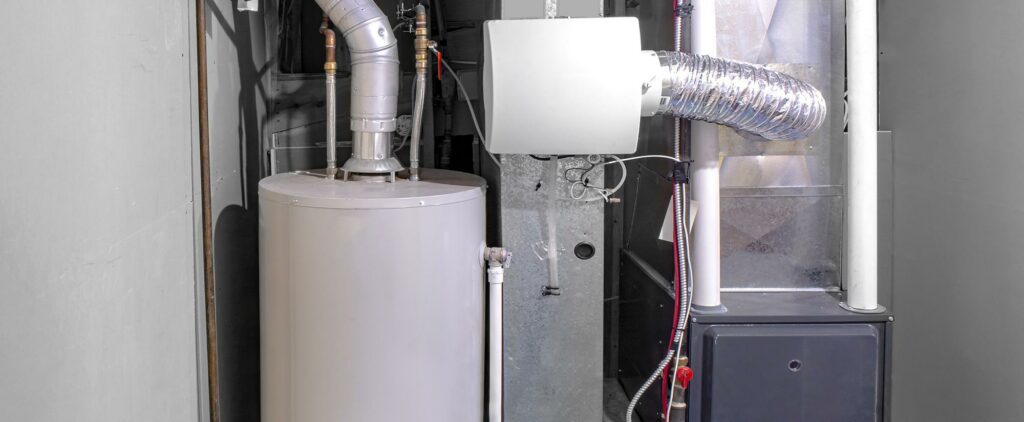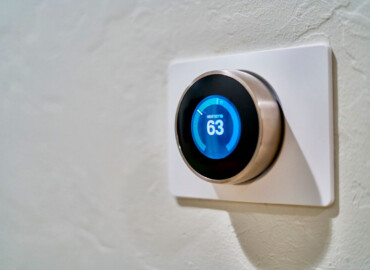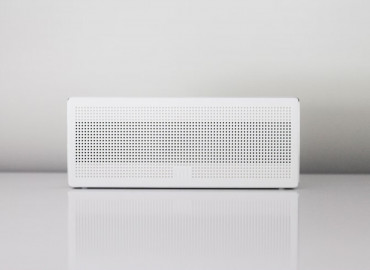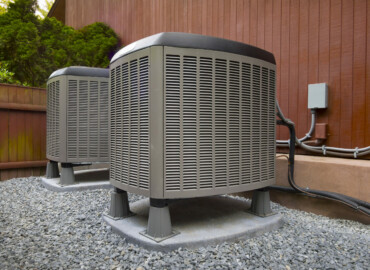The Truth About Furnace Humidifiers: Do They Actually Work?
Furnace humidifiers are an excellent solution for those looking to relieve discomfort caused by dry indoor air, especially during the winter months when heating your home can significantly reduce humidity levels. They can also help alleviate respiratory symptoms related to allergies and asthma. In this comprehensive guide, we will explore the different types of furnace humidifiers, their installation process, costs, maintenance, and much more.
What is a Furnace Humidifier?
Furnace humidifiers are devices that help increase indoor humidity levels by adding moisture to the dry air and distributing it throughout your home via your furnace or HVAC system. They are most commonly used during the winter months when heating your home can significantly dry out the indoor air. This may lead to various symptoms such as itchy skin, chapped lips, increased stuffiness in nasal passages, and exacerbated symptoms for allergy and asthma sufferers.
A furnace humidifier is installed directly onto your home’s heating and cooling system, ensuring less maintenance and ease of use. These whole-house humidifiers are an excellent investment for long-term relief and improved indoor air quality.
Types of Furnace Humidifiers
There are three main types of furnace humidifiers, all of which are effective in raising your indoor humidity levels. They are connected to your home’s water supply and distribute moist air throughout your home via ducting. The primary differences between these types lie in their method of operation, installation difficulty, and maintenance requirements.
Bypass Drum Humidifiers
Bypass drum humidifiers are enclosed units with a slowly rotating drum covered by an evaporator pad that absorbs water flowing to it from the water supply line into a water pan. They are equipped with a saddle valve and internal float valve to regulate water flow and include an overflow drain cup. Most can be controlled by an external humidistat set to a desired relative humidity (RH) level, which will initiate operation as needed. Maintenance for bypass drum units includes regular cleaning of the water pan to remove sediment buildup and potential bacteria or mildew. Additionally, the evaporator pad may need to be replaced periodically.
Flow-through Humidifiers
Flow-through humidifiers are also bypass units that utilize a water panel evaporator pad, water distribution tray, and water supply line to add moisture to dry air when your home’s system cycles on. They have an exterior case with the water panel pad exposed on one side and are equipped with a drain spud that uses a nearby floor drain for water overflow. This type can also be connected to an external humidistat or home air control, allowing you to set a desired RH level. Flow-through humidifiers are easier to maintain than bypass drum units but may still require the occasional replacement of the evaporator pad.
Steam Whole-home Humidifiers
Steam whole-home humidifiers are unique in that they heat water to create steam, operating independently of your furnace or HVAC system. Two electrodes located inside the steam canister use electric current to boil the water and generate steam, which flows through a hose and is injected into the air flowing through your home’s ducting. A humidistat regulates their operation. These humidifiers are easy to maintain, offer flexible placement options, and include overflow protection and low-water cutoff. Since water is boiled before distribution, you can enjoy not only humidified air but also germ-free air.
Benefits of Using Furnace Humidifiers
Furnace humidifiers offer several benefits for homeowners, including:
- Improved indoor air quality: Proper humidity levels can help reduce the spread of colds and flu, as well as alleviate their symptoms.
- Reduced static electricity: Higher humidity levels help reduce static electricity in your home, which can be annoying and potentially damaging to electronics.
- Preservation of wood furnishings: Maintaining proper humidity levels can prevent wood furniture, floors, and musical instruments from drying out and cracking.
- Energy savings: With increased humidity, you may feel warmer at lower temperatures, allowing you to save on heating costs.
- Reduced respiratory issues: Furnace humidifiers can help alleviate symptoms for those with allergies and asthma by maintaining a comfortable humidity level.
Factors to Consider When Choosing a Furnace Humidifier
Selecting the best furnace humidifier for your needs depends on several factors:
- Size of your home: Larger homes require a more powerful humidifier to effectively maintain humidity levels.
- Climate: If you live in an area with dry winters or low humidity year-round, a furnace humidifier can provide significant benefits.
- Existing HVAC system: Ensure that your current heating and cooling system is compatible with the humidifier you choose.
- Maintenance requirements: Different types of furnace humidifiers have varying maintenance needs, so consider how much time and effort you are willing to invest in maintaining your humidifier.
- Budget: Furnace humidifiers vary significantly in price, so determine how much you are willing to spend on both the initial purchase and ongoing maintenance.
Installing a Furnace Humidifier
Before installing a furnace humidifier, check whether your manufacturer’s warranty will be voided if you install the unit yourself. Some manufacturers require the unit to be installed by a licensed HVAC technician.
Bypass drums and flow-through humidifiers have similar installation setups, both being installed on the bypass duct so that the humidifier can use your home’s supply plenum to draw in air and your return air duct to disperse moisture. Most models can be mounted on the plenum or the return air drop, and some can be reversed if the supply line is inconveniently located as originally placed.
Steam humidifiers usually require installation by a qualified licensed technician due to their flexible placement options and electrical requirements.
How Much Does a Furnace Humidifier Cost?
Furnace humidifiers can be an affordable addition to your home. Bypass/drum humidifiers are the least expensive, with prices ranging from about 240. Replacement parts are readily available at low cost, with drum pads costing about 38.
Flow-through units are slightly more expensive, with prices ranging from 370, depending on the size needed for your home. Replacement pads or parts are affordable, typically costing between 20.
Steam humidifiers can cost significantly more than other whole-home humidifiers, with prices ranging from mid-1200. However, the heating-cost savings gained from installing a steam unit can help offset the initial installation cost over time. Steam canisters may need to be replaced occasionally, costing about $100.
Cleaning and Maintaining a Furnace Humidifier
Each type of furnace humidifier has its own maintenance requirements:
- Bypass drum units: These require the most routine maintenance, including regular cleaning of the water pan or reservoir. The evaporator pad and other parts may sometimes need to be replaced.
- Flow-through humidifiers: These need the pad and assembly checked and cleaned annually to remove mineral deposits, if necessary. The pad may also need to be replaced, especially if you have very hard water.
- Steam humidifiers: These require the least amount of routine maintenance. Annual inspections for loose electrode and plumbing connections, drain line blockage, and steam hose alignment are all that are needed. This can be performed at the same time your furnace or HVAC system is inspected.
Additional Furnace Humidifier Features
When comparing whole-house humidifier models, consider the following convenience features:
- Automatic operation: Some units allow you to set your desired humidity level, and the humidifier will automatically maintain that level. Others have a manual knob control for setting the level.
- Overflow protection: A float valve prevents the unit from overflowing by shutting off the water at a desired level.
- Automatic shut-off: In the case of a low water level, this feature is essential for preserving the unit.
- Mounting frames: Most models provide a template for accurate placement on the plenum, simplifying installation onto existing ductwork.
- Flexible installation: This applies to drum and flow-through models, allowing them to be mounted in several different configurations for easier installation.
- Corrosion-resistant: Some whole-home humidifiers are enclosed in corrosion-resistant housing to protect the unit’s longevity.
- AutoFlush: For bypass drum models, this function automatically removes minerals from the unit by flushing the reservoir at set intervals you control.
- Reversible side panels: These panels allow installers to place the unit on either the left or the right of ductwork, ensuring optimal placement.
Do You Need a Furnace Humidifier?
Whether you need a furnace humidifier depends on your climate, heating habits, and personal comfort preferences. If you live in an area with dry winters and consistently use heat, a furnace humidifier can provide significant benefits. However, if you live in a warm, humid climate and rarely use heat, you might be better off using a portable humidifier as needed instead of a whole-house humidifier.
Adding too much humidity to your home’s air can encourage mold growth, so it’s essential to monitor your home’s humidity levels throughout the year to determine whether supplemental humidity is needed.
Conclusion
Furnace humidifiers can effectively add comforting moisture to your entire home by working directly with your existing HVAC or furnace system. These devices use your home’s water supply via a supply line and either an evaporator pad or steam to balance and maintain a healthy humidity level. Choose a bypass/drum, flow-through, or steam type to best suit your installation requirements and budget. With proper selection, installation, and maintenance, a furnace humidifier can provide long-term relief and improve indoor air quality for your home.




